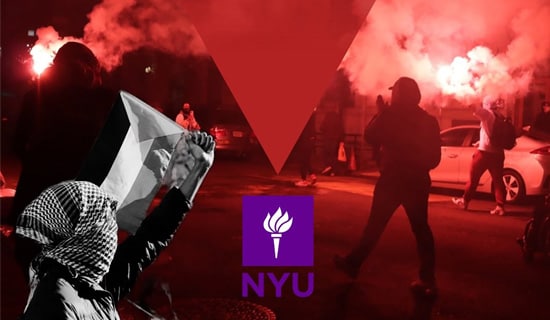On October 25, 2023, the UN Security Council held a debate concerning Hamas' October 7 attack on Israel. Setting the stage for the debate, UN Secretary-General Antonio Guterres said: "It is important to also recognize that the attacks by Hamas did not happen in a vacuum. The Palestinian people have been subjected to 56 years of suffocating occupation."[1]

In 2018, Israeli Prime Minister Benjamin Netanyahu defended his policy of allowing the transfer of billions of dollars in Qatari aid money to Hamas-controlled Gaza by saying that the money was needed "to prevent a humanitarian disaster" in the Gaza Strip.[2]
American political scientist Norman Finkelstein said on October 7, the day of the Hamas attack: "For the past 20 years the people of Gaza, half of whom are children, have been immured in a concentration camp."[3] Later, in a November 23, 2023 interview, Finkelstein called the Hamas attackers "concentration camp inmates… who burst the gates of Gaza."[4]
In 2010, then-UK prime minister David Cameron called Gaza a "prison camp." Cameron is currently UK foreign secretary.[5]
In 2009, former U.S. presidential candidate Ron Paul said that Palestinians in Gaza are "virtually…in a concentration camp."[6]
In 2009, former U.S. presidential candidate Pat Buchanan said that Gaza is "an Israeli concentration camp."[7]
All of these claims are totally false.
SUPPORT OUR WORK

In the case of Netanyahu, it was an attempt to justify his decade-long policy of funneling the Qatari billions to Hamas, a policy that enabled this jihadi organization to build its military empire and carry out its October 7 attack.
Before the present war, the Gaza Strip – which has not been under Israeli occupation for 18 years, since the Israeli forces withdrew from it in 2005 – resembled a local Dubai more than it resembled the poverty-stricken city that is envisioned by many. It is also important to note that, despite the claim that Gaza is under "a total siege," its border with Egypt has been open, with hundreds of thousands of people crossing in and out of the Strip every year, and an average of 700 trucks of goods and supplies entering Gaza from Israel every day.
This report is another in the series titled "Gaza Before October 7,”[8] showing the true face of the "suffocating occupation" and "humanitarian disaster" that supposedly prevailed in the Gaza Strip before the start of the present war. The series will present videos, photos and data on life in Gaza – all of them from Palestinian, Arab, UN and other non-Iraeli sources. It will give a general picture of the Strip: its residential areas and tower blocks, its universities and other higher education institutions, its health facilities and hospitals, its banks and financial institutions, its malls and markets, and its recreation facilities such as the water park, music center and zoo. The series will also present data on standards of living, income and infrastructure (such as water desalination plant) in Gaza.
Gaza had its poorer areas, primarily the refugee camps; they will be shown in the series, and the viewer can compare them to refugee camps and slums in other parts of the world.
Two important points must be stressed. First, that the reality of life in Gaza before the war, as will be documented in this series, did not in itself constitute a political solution to the problem of Gaza, a solution that is and was sorely needed.
Second, the Israeli counterattack has caused immense devastation in the built-up parts of the Gaza Strip, as well as many civilian casualties, as a result of Hamas' policy of using civilians as human shield, in violation of international law. This series does not show Gaza as it is today, but as it was before the war began.
This part of the series presents a video filmed by Palestinian social media influencer and journalist Yousuf Alhelou showing everyday life in Gaza. To view the video, click below:
* Y. Carmon is the President and Founder of MEMRI.
[1] Timesofisrael.com/liveblog_entry/un-chief-says-hamas-attacks-did-not-occur-in-vacuum-sparking-israeli-fury, October 24, 2023.
[2] Cnn.com/2023/12/11/middleeast/qatar-hamas-funds-israel-backing-intl/index.htmlE, December 12, 2023.
[3] Cameraoncampus.org/blog/what-norman-finkelstein-gets-wrong-about-gazan-misery, December 5, 2023.
[4] Mediaite.com/uk/concentration-camp-inmates-norman-finkelstein-on-hamas-terror-attack-in-piers-morgan-interview/, November 24, 2023.
[5] Theguardian.com/politics/2010/jul/27/david-cameron-gaza-prison-camp, July 27, 2010.
[6] Thehill.com/blogs/blog-briefing-room/news/lawmaker-news/36113-ron-paul-palestinians-in-a-virtual-concentration-camp/, January 5, 2009.
[7] Youtube.com/watch?v=02FKf2qACHA.




